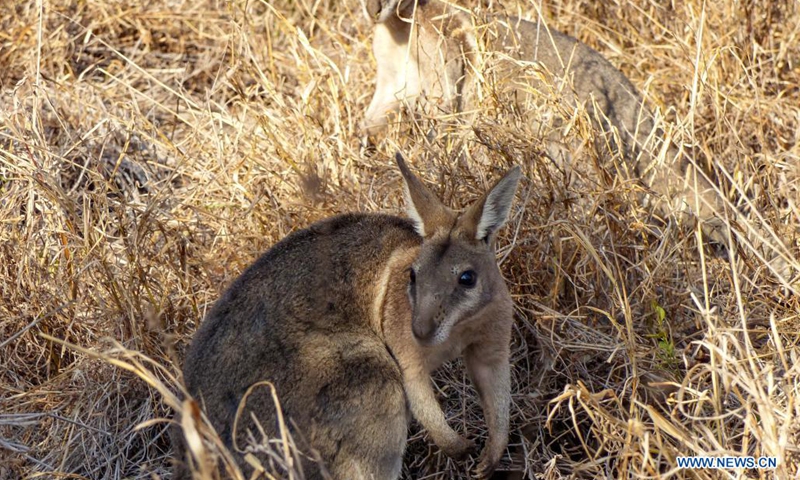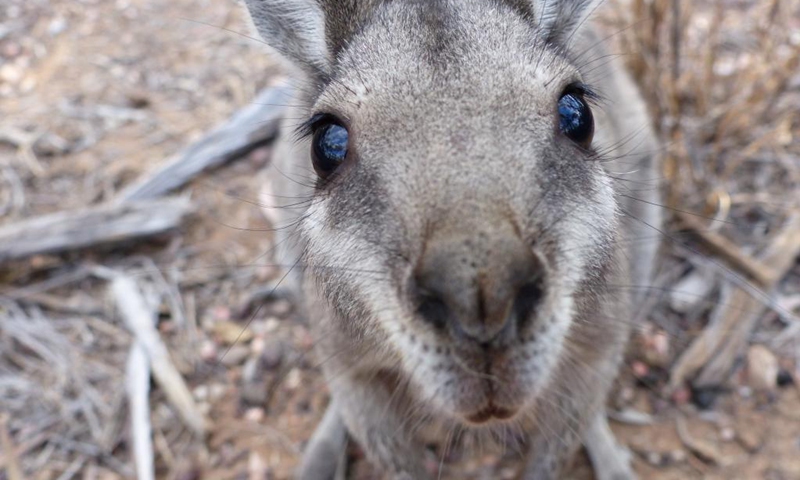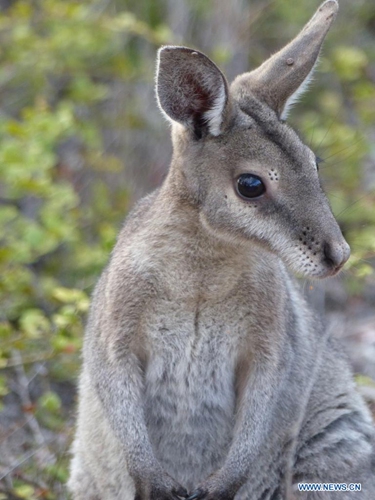
File photo taken on Sept. 26, 2018 shows bridled nailtail wallabies at the Avocet Nature Refuge in central Queensland, Australia. A population of bridled nailtail wallabies in the Australian state of Queensland has been brought back from the brink of extinction, after conservation scientists trialled an intervention technique never before used on land-based mammals.(Photo: Xinhua)

File photo taken on Sept. 26, 2018 shows a bridled nailtail wallaby at the Avocet Nature Refuge in central Queensland, Australia. A population of bridled nailtail wallabies in the Australian state of Queensland has been brought back from the brink of extinction, after conservation scientists trialled an intervention technique never before used on land-based mammals.(Photo: Xinhua)

File photo taken on Sept. 26, 2018 shows a bridled nailtail wallaby at the Avocet Nature Refuge in central Queensland, Australia. A population of bridled nailtail wallabies in the Australian state of Queensland has been brought back from the brink of extinction, after conservation scientists trialled an intervention technique never before used on land-based mammals.(Photo: Xinhua)
A population of bridled nailtail wallabies in the Australian state of Queensland has been brought back from the brink of extinction, after conservation scientists trialled an intervention technique never before used on land-based mammals.
This new conservation strategy, revealed on Tuesday, was conducted by scientists at the University of New South Wales (UNSW), giving the bridled nailtail wallaby a head starting in life. The article has also been published in Current Biology.
Using this method known as 'headstarting', the researchers rounded up bridled nailtail wallabies under a certain size and placed them within a protected area where they could live until adulthood without the threat of their main predators - feral cats - before being released back into the wild.
The Avocet Nature Refuge in central Queensland, where scientists chose to conduct the research has only 16 wallabies in 2015, but after three years of gradually releasing headstarted wallabies that had reached the right size, the estimate of the total population of bridled nailtail wallabies both inside and outside the headstarting exclosure was 47.
The lead author Alexandra Ross described how they decided on the strategy to only focused on the juvenile wallabies from feral cats, saying juvenile wallabies under 3 kilograms, or smaller than a rugby football, are easy prey for feral cats, while the survival rate of adults is much higher than juvenile wallabies.
"So we figured if we can just get them through that tough period - when they're still little and an easy size for a cat to prey on - by putting them in feral-free protected areas, then we could make a positive difference to the population numbers," said Ross.
Bridled nailtail wallabies were even believed extinct from 1937 until 1973 when a fencing contractor reported he had seen a population of the wallabies living on a property near Dingo of Queensland.
Up until now, headstarting has been successfully used with some birds, fish and seals, and scientists believed it should also be implemented for terrestrial mammals.
Mike Letnic, a co-author of the article, said one of the drawbacks with separating animals for longer periods in feral-free enclosures was that animals unlearned their fear of predators on the outside, but she believed that headstarting could avoid this problem, as animals are only separated from predators for a few months or a year at the most.
